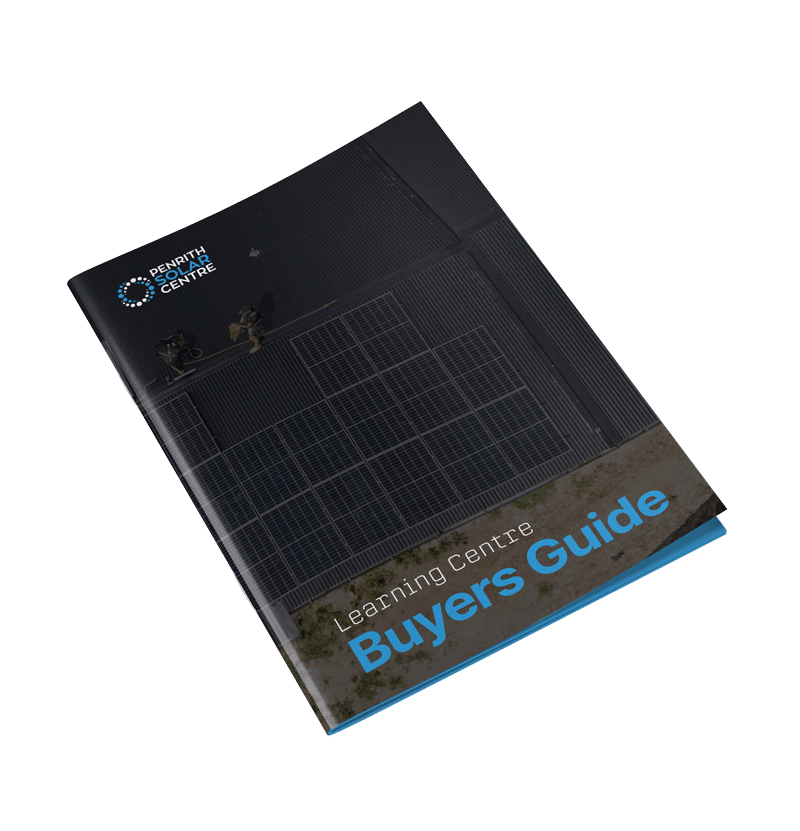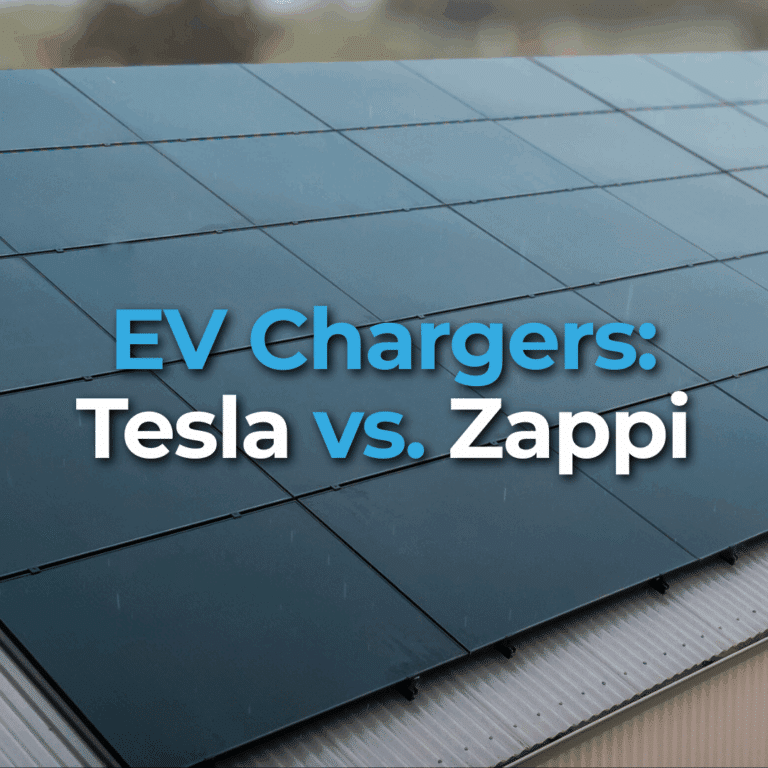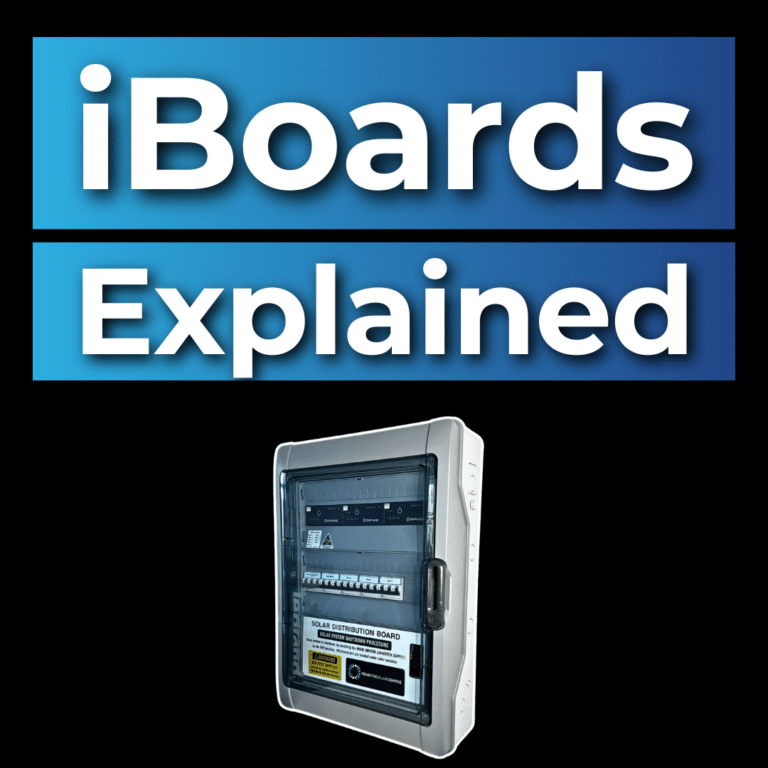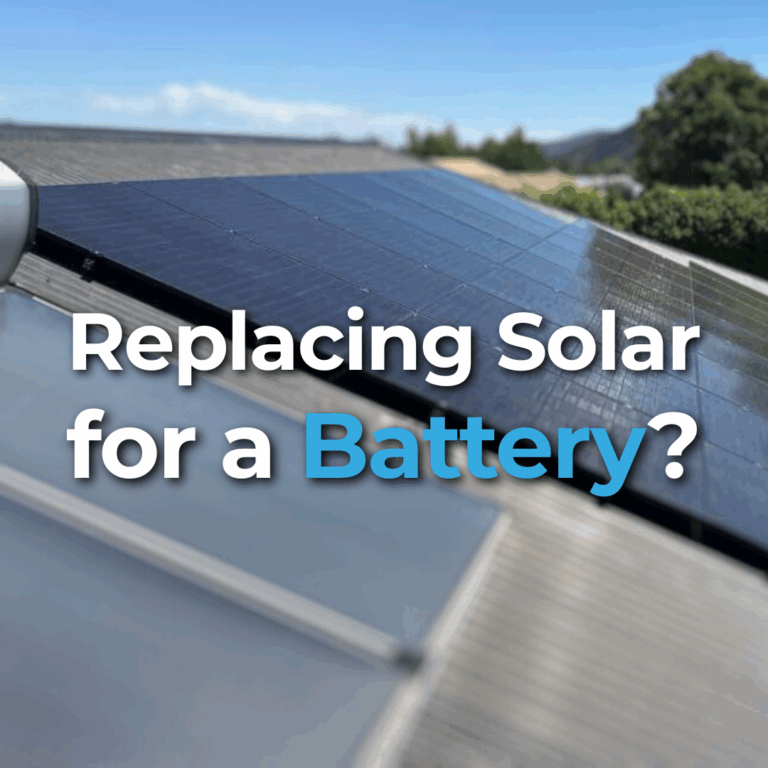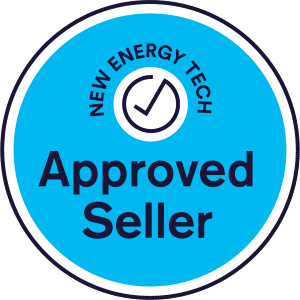
You invested in solar. A solar battery too. You’re generating clean energy from your rooftop, using less from the grid, and feeling good about it.
But your export credits are small. Your feed-in tariff has dropped. And in some cases, you’re being charged to send power back to the grid.
If this sounds familiar, you’re not alone. Retailers are still playing the same game they always have: buying your solar power for cheap and selling it back to your neighbour at higher rates.
This article will show you how Amber flips the script on energy. Amber gives you access to wholesale energy prices, helping you make money from your battery and giving you more control over your power than ever before.
At PSC, we love companies like Amber. They’re leading the charge to save customers money with solar batteries. We’re here to give you a little education about a company that’s earning significant payouts for its customers.
In this article, you’ll learn about the following:
- Why Traditional Energy Retailers Are Failing You
- What Amber Is and How It’s Different from Energy Retailers in Australia
- How Amber Energy Helps You Make the Most of Your Solar Battery
- Is Amber Energy Right for You? What You Need
- Common Questions and Concerns About Amber Energy
By the end of this article, you’ll know what Amber is and whether you want to investigate it further. Let’s get into it.
Why Traditional Energy Retailers Are Failing You
If you’re a homeowner with rooftop solar, you’ve probably noticed that the numbers on your energy bill aren’t particularly rewarding. We’re talking about the feed-in tariff.
A feed-in tariff is the rate you receive for exporting your excess solar energy to the grid.
Not long ago, receiving $0.20 or even $0.30 per kilowatt hour was common, depending on your location and provider. However, many households are seeing those rates fall to less than $0.05 today.
In some regions, customers receive no payment at all for their exported solar. And in the most frustrating scenarios, some solar users are being charged to send their clean energy to the grid.
Traditional energy retailers make money by doing one thing: buying energy cheaply and selling it back to you at a markup. That includes the solar energy you export to the grid.
Here’s how it works:
- You send your excess solar into the grid.
- Your retailer buys it from you at a low feed-in tariff (or sometimes pays you nothing).
- They sell that same energy to your neighbours at full price.
It’s a great model for them. Not for you.
And when energy prices spike (which they do a lot lately), retailers lock in prices months in advance and profit off the difference. Meanwhile, your bill climbs, leaving you wondering why your solar system isn’t saving you more.
This is why you’re seeing headlines about negative feed-in tariffs and the “sun tax” for solar households.
If you’re interested in learning a bit more about negative feed-in tariffs, you might want to check out the following article titled, Everything You Need to Know About Ausgrid’s Two-Way Solar Tax.
What Amber Is and How It’s Different from Energy Retailers in Australia
What is Amber?
Amber is an Australian energy company that works very differently from most energy retailers. A typical energy retailer charges you for every kWh of electricity you use. Amber doesn’t do that.
Instead, they give you access to the real-time wholesale price of electricity. Instead of playing the energy retailer game, they turn you and your battery into an energy retailer.
Amber doesn’t add a markup to your usage. They don’t make more money when you use more power. Instead, you pay a simple monthly subscription fee, usually between $22 and $25. That’s it.
No hidden fees. No confusing contracts. Just a fair way to buy electricity at the real price.
What’s the Wholesale Energy Market?
The wholesale energy market is where electricity is bought and sold in real time. Unlike fixed-rate energy plans (where your price stays the same no matter what’s happening in the grid), wholesale prices change every 30 minutes.
These price changes depend on supply and demand:
- When there’s plenty of renewable energy in the grid, like on sunny, prices can drop really low.
- When demand is high, like during hot evenings when everyone turns on their air conditioning, prices can spike, sometimes jumping to 10 or even 15 times the average.
With Amber, you’re no longer locked into a rate set months ago by your retailer. Instead, you get direct access to these changing prices, just like the big energy companies do.
That means you can:
- Use power when it’s cheap (like running your dishwasher or charging your EV during the day when solar is strong)
- Sell power from your battery when prices are high and earn more for your energy
Think of it like playing the stock market but with electricity. Buy low. Sell high. All automated in the background by SmartShift. We’ll get into this in the next section.
It’s a smarter, more flexible way to manage your power, and in many cases, it can save you money or even help you earn from your solar and battery setup.
Most traditional energy retailers were built around a very different kind of household, one that uses energy from the grid and pays a flat rate every quarter.
Amber was created specifically for solar and battery households. Everything about their model is designed to help you get more out of the system you’ve already invested in.
If you’re interested in learning a bit more about feed-in tariffs, you might want to check out the following article titled, Understanding Feed-In Tariffs and Their Limitations.
Power up your savings. Click here.
How Amber Energy Helps You Make the Most of Your Solar Battery
If you already have a battery or you’re thinking about getting one, there are two reasons to own one: independence and savings.
You want to rely less on the grid. And you want to make the most of the solar you generate.
Amber helps with that.
From Backup to Revenue Stream
When most people install a home battery, they think of it as a simple backup. It charges up during the day from excess solar and then powers the house at night. But in a lot of homes, that’s as far as it goes.
Amber makes your battery much smarter.
Using SmartShift, Amber’s intelligent battery control system, your home battery becomes more than just a storage device. It becomes a small-scale, automated energy trader that knows how to read the market and respond in real time.
I know what you’re thinking: I’m not technically savvy. How could I possibly do all of that? Don’t worry, SmartShift is like an AI battery assistant that monitors your solar system for you.
Here’s what that looks like:
SmartShift watches the wholesale energy market in real time. It checks prices every 5 minutes and tracks when energy is cheap and when it’s expensive.
When prices are low, especially during the middle of the day when there’s lots of solar in the grid, SmartShift tells your battery to charge, either from your panels or directly from the grid, if the cost is low enough.
When prices spike, usually in the early evening when demand is high, SmartShift discharges your battery. It sends that stored energy back to the grid, where it can earn a high feed-in tariff, sometimes 10 to 20 times higher than your standard tariff.
Your battery is no longer just powering your lights and appliances. It’s helping you earn real money.
It’s a smarter way to use a tool you already have. Instead of charging and discharging on a fixed routine, SmartShift uses data and automation to do it when it makes the most financial sense.
You didn’t just install a battery; you installed a source of passive income.
You’re in Control (If You Want to Be)
Not everyone wants to hand over complete control of their battery. With Amber, you’re not locked into automation. You can stay as hands-on (or hands-off) as you like.
Here’s how it works:
Let SmartShift run automatically – If you’re the set-it-and-forget-it type, SmartShift can quietly optimise your battery in the background. It will decide when to charge and discharge based on real-time energy prices without you lifting a finger.
Take over whenever you need to – Want to control your battery before a storm or planned outage manually? Just pause automation and switch to manual mode. Your battery will hold power for your home instead of sending it to the grid.
Customise how your battery is used – You can prioritise your household first, then only trade excess energy. Or you can prioritise trading energy. It’s your choice.
You don’t need to be an energy nerd to benefit from Amber’s system. But if you are the kind of person who likes graphs, data, and fine-tuning your setup, the Amber app gives you powerful tools and detailed insights to do precisely that.
If you’re interested in learning a bit more about solar batteries, you might want to start with the following article titled, Adding a Battery to a Solar System.
Let’s talk solar savings. Click here.
Is Amber Energy Right for You? What You Need
There are a few situations where Amber might not be a perfect fit. At least not yet:
- Your battery is too small. If you’ve only got 5–6 kWh of storage, you may not have enough to power your home and trade with the grid.
- Your inverter can’t be controlled. Amber needs to control both your battery and solar inverter to get the most out of the system.
- Your energy use is low or mostly at night. If you’re hardly using power during the day and your system has nothing to store or shift, there may not be much benefit.
- You don’t want automation. If you’d rather your system do its thing without optimisation or control, Amber’s smart features might feel like overkill.
If you’d like to learn a bit more about what solar batteries are on the market, you might want to check out the following article titled, 6 Best Solar Batteries on the Market.
Ready to go solar? Click here.
Common Questions and Concerns About Amber Energy
It’s normal to have questions when you hear words like “wholesale prices,” “real-time energy trading,” or “negative feed-in tariffs.” Let’s answer the questions you’re probably thinking about right now.
“Isn’t wholesale pricing risky?”
It can sound that way at first. Prices go up and down every 30 minutes, which sounds unpredictable. But here’s the key difference:
Amber doesn’t just drop you into the deep end. If you’ve got solar and a battery, you’re already protected from most of the price volatility because your system powers your home and sells when it’s profitable. Amber also adds a safety net: a bill guarantee.
If your average power cost over 90 days is higher than the government’s default market offer (DMO), Amber will refund the difference. No fine print. No catch.
“Will I really make money or just ‘save’ money?”
Both.
Your solar already helps you save by using less grid power. But with Amber + SmartShift, you can also make money by exporting from your battery at the right times.
Real customers have earned hundreds, and in some cases over $1,000 a year, just by letting Amber manage their system. It’s not a guaranteed income—it depends on market conditions—but it’s a real and proven upside that most energy retailers don’t offer.
“What if something goes wrong?”
If your battery loses internet, it just goes back to acting like a regular battery, powering your home. You don’t lose power. You don’t get a surprise bill.
You just miss that trading window, which is annoying but not dangerous. And again, the bill guarantee is there as backup.
“Is this going to be too complicated for me to manage?”
Nope.
Amber handles the smart stuff for you. If you’re the “set it and forget it” type, SmartShift runs in the background and does the work.
If you like to tinker, the app gives you visibility and control. You can:
- Let Amber control everything
- Pause it and take over manually
- Preserve your battery charge if you’re going away
You’re in control but you don’t need to be an energy expert to benefit.
If you’re interested in learning a bit more about the NSW solar battery rebate, you might want to check out the following article titled, Everything You Need to Know About the Home Battery Rebate for NSW.
Get started with solar. Click here.
Final Thoughts: Empowered, Not Exploited
Traditional retailers still operate on outdated models designed to benefit them, not you. They pocket the margin. They limit your control. And they offer you cents for the energy you produce while selling it back to your neighbours at a premium.
Amber flips that.
It’s not about loyalty programs or gimmicky discounts. It’s about full transparency, real-time pricing, and helping you make the most of what you’ve already got, whether that’s a solar system, a home battery, or an EV in the driveway.
At PSC, we’re finding ways to help our customers save money. We team up with solar companies like Amber when we believe they will provide value to you. They’re worth a call.
It’s a smarter way to take control of your energy.

If you’re interested in learning a bit more about weighing the cost of solar against the cost of the grid, you might want to check out the following article titled, Cost of Solar Panels vs. Cost of Energy from the Grid.

